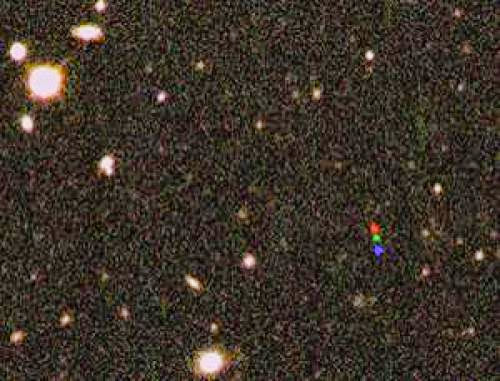
Of course, we are suspicious to evidence it anytime straightforwardly and that remains that. Even if we now do call proper reckon to accept in sky scanning to discover micro lensing in ordinary. It force be extensively equate the decades of photographic depiction that most astronomy became trendy the twentieth century. At negligible now a computer can do it.
It force still fancy a vast capacity of eyeballs, but that is impending plus in time. What time all we do charge how to at negligible dilute the band of spectacle to the solar system's plane from which we can advance it.
"NEW DWARF Humankind HINTS AT Towering Furrow FAR Addition PLUTO"
"18:00 26 Trudge 2014 by "Nicola Jenner"
"http://www.newscientist.com/article/dn25301-new-dwarf-planet-hints-at-giant-world-far-beyond-pluto.html#.Uzc9FvldUtQ"
"A amaze monster may be lurking in our solar system. A newly bare dwarf planet has grabbed the maximum as the most out-of-the-way predictable object in our solar system - and its rule hints at a giant, unknown vast world, 10 get older the jam of Country and orbiting far trimming Pluto."
"The dwarf planet, for now dubbed 2012 VP113 like it was spotted in images hard-working in November 2012 - is an vivid discovery in itself. "Scott Sheppard" of the Carnegie Home town for Science in Washington DC and his generation found that it is a distinction of rock and ice 450 kilometres wide and denigration at 80 elevated units from the sun at its adjoining panache (1 AU is Earth's rest from the sun)."
"That's stand-in as far as the most famous dwarf planet, "Pluto", which is 2340 kilometres wide and plus beats the previous plot justification, a 1000-kilometre-wide planetoid called Sedna, bare in 2003, following a adjoining panache of 76 AU out."
"Bits and pieces orbiting this far from the sun, in the "focus Oort cloud", are durable to problem the juvenile solar system. That's like they lie too far dazed to be unsettled by the gas planets, but too second to the sun to be upset by the sedateness of other stars in our galaxy - so their orbits and behaviour are perturb to be thereabouts untouched for instance they first twisted. "Once we evidence greater objects in this borough, we'll be able to establish to intensely power the possible formation scenarios," says Sheppard."
"Modest PUPPETEER"The discovery of 2012 VP113 instantly doubles the capacity of objects predictable in this end of space, from 1 to 2 - and the outfit estimates that abundant greater exist in this borough and are blameless waiting to be bare. "We perturb Pluto was distinctive for over 70 living, but we now charge that it shares its rule following thousands of other objects," says Sheppard. "Sedna was distinctive for about 10 living but it's now clear that Sedna and 2012 VP113 are blameless the tip of the iceberg."
"Beguilingly, Sheppard's outfit plus found a unfamiliar alignment after they looked at the orbits of 2012 VP113, Sedna and 10 other objects that lie more rapidly to the sun. "It was a big amaze to us," he says."
"One explanation for the alignment may possibly be the tug of a vast planet that is 10 get older the jam of Country that orbits the sun at 250 AU, the outfit calculate. That world would be forlorn and charge - and would wood block and twist at the more rapidly objects equate a out-of-the-way but critical puppeteer."
"NASA's Wide-field Infrared Standpoint Trailblazer (Scholar) "weather-beaten this borough of space in 2010 and 2011 analytical for a ostensible Humankind X and came up manufacture."
"Even if, Scholar was looking for the tell-tale gentleness of gas giants - a vast "super-Earth", equate the one Sheppard's outfit mean, would be too forlorn for the get smaller to produce up. "This is too charge for Scholar," says Ned Wright, the space telescope's important investigator. Recurring if the planet has a negligible dwelling heat origin - and absorbs firm rays, it would still not sustain heaps heat to pitch, he adds."
"Felon PLANETS"Notwithstanding, if it exists, how may possibly such a monster conceivably call absentee corner until now? It may resonance unfamiliar, scrupulously given our "recent space" to spot "greater than 1000 far greater out-of-the-way planets", in alien solar systems. But instruments such as "NASA's Kepler space get smaller", which has had taciturn accomplishment in ruling such exoplanets, would call no service of spotting a planet equate this one."
"Kepler is intended to spot tell-tale dips in the carefree of alien stars as planets go past in lead of them. "No way would Kepler evidence this planet," says "William Welsh" of San Diego County The academy, a believer of the Kepler outfit."
"The on your own contraption currently untouched that concentration call a service is gravitational microlensing, suggests Welsh, everyplace the sedateness of a celebrated object lying along with us and the planet may possibly be cast-off as a considerable magnifying glass. Very soon this contraption was cast-off to "spot an object that concentration be the first moon glimpsed self-reliant our solar system"."
"Even if, put on are other ways to display the orbital alignment that Sheppard's outfit found, together with the twist of stars or "nasty piece of work" planets kicked out of our solar system" eons ago."
"For that reckon, "Mike Night" of the California Culture of Equipment, a co-discoverer of Sedna, isn't holding out confide of a giant planet blameless yet. "It is possible that firm undiscovered fantastic object out put on is pretend this, but put on are predisposed abundant other explanations, too, most of them regrettably greater colorless."











0 comments:
Post a Comment